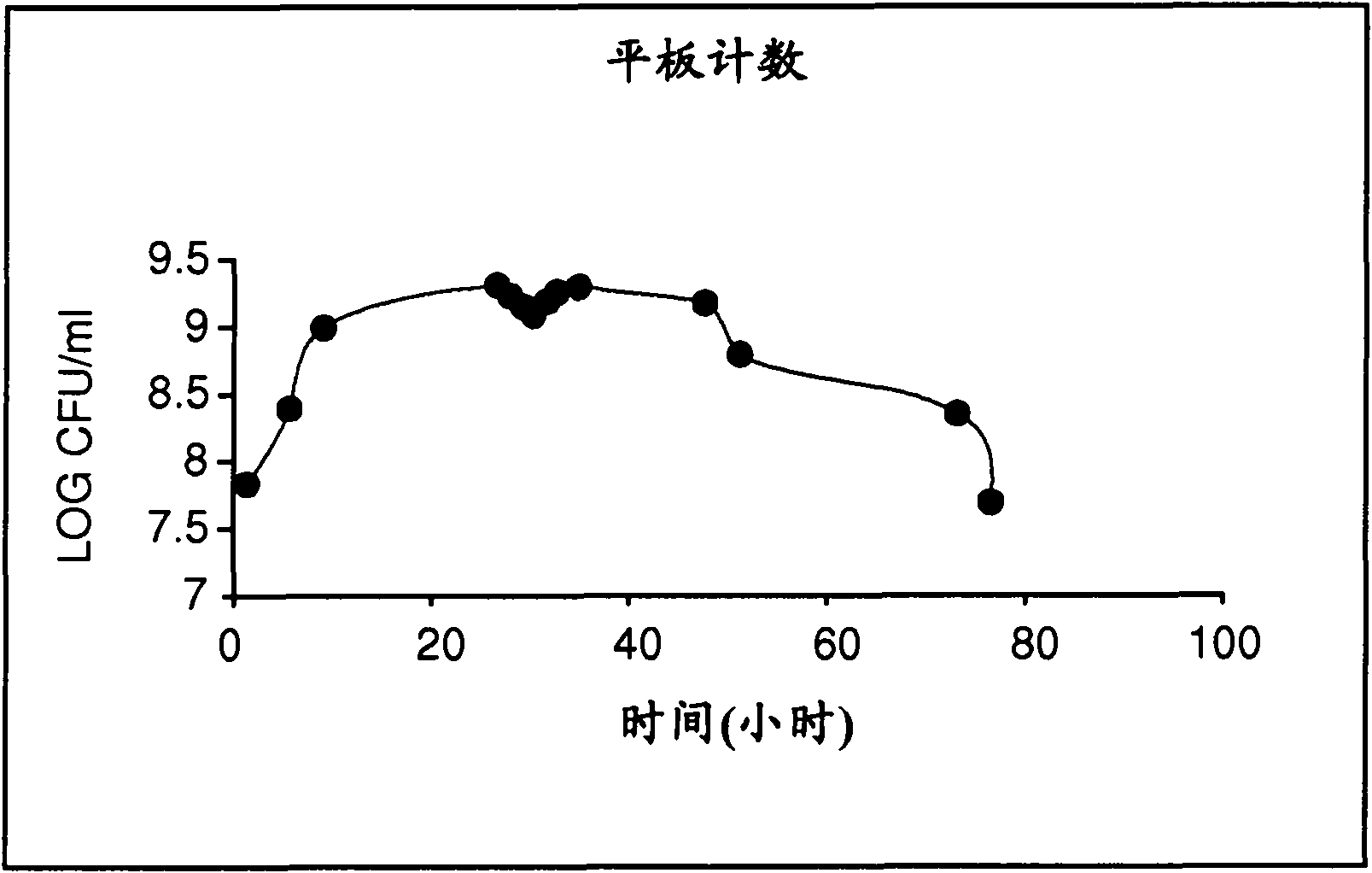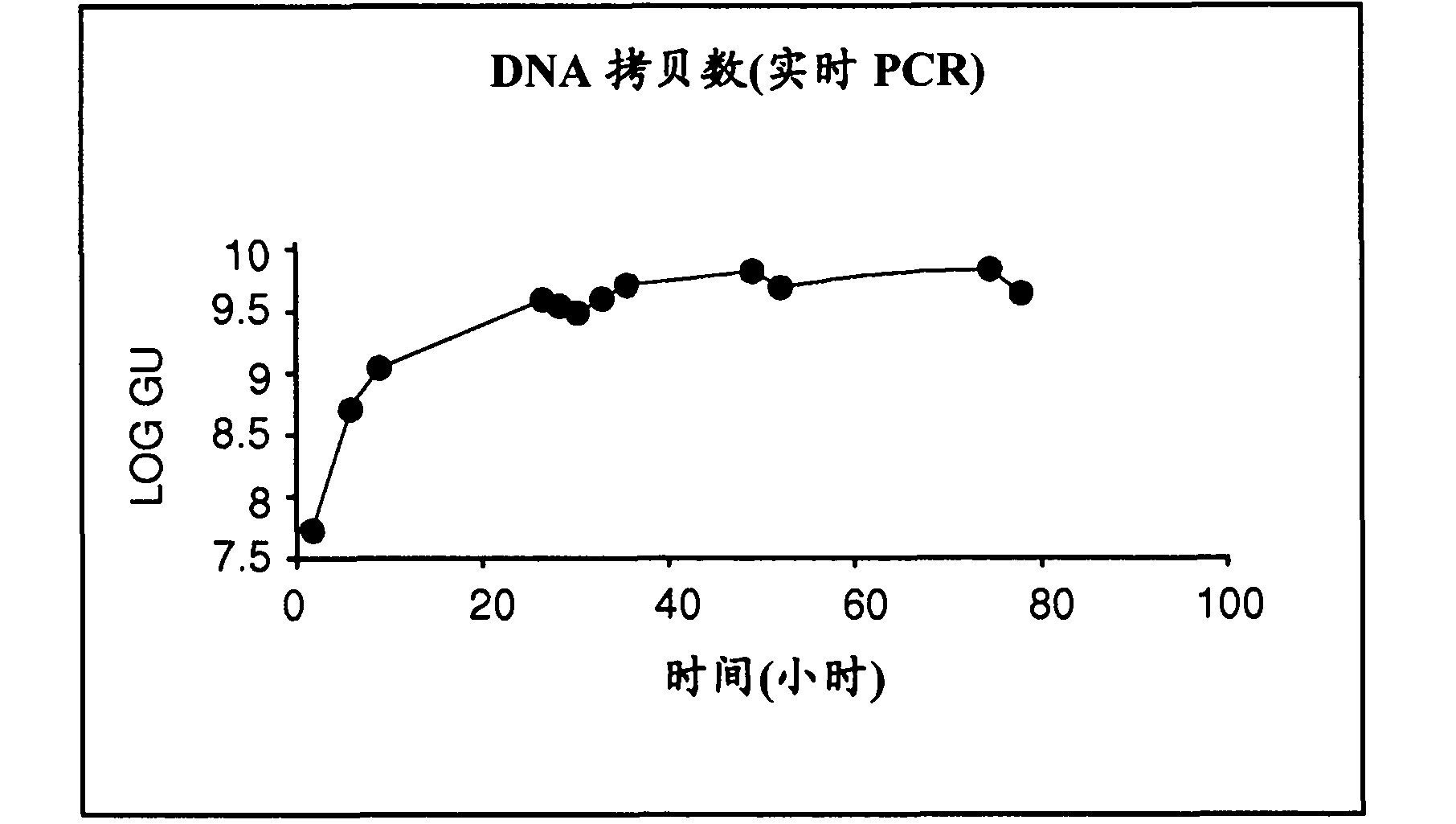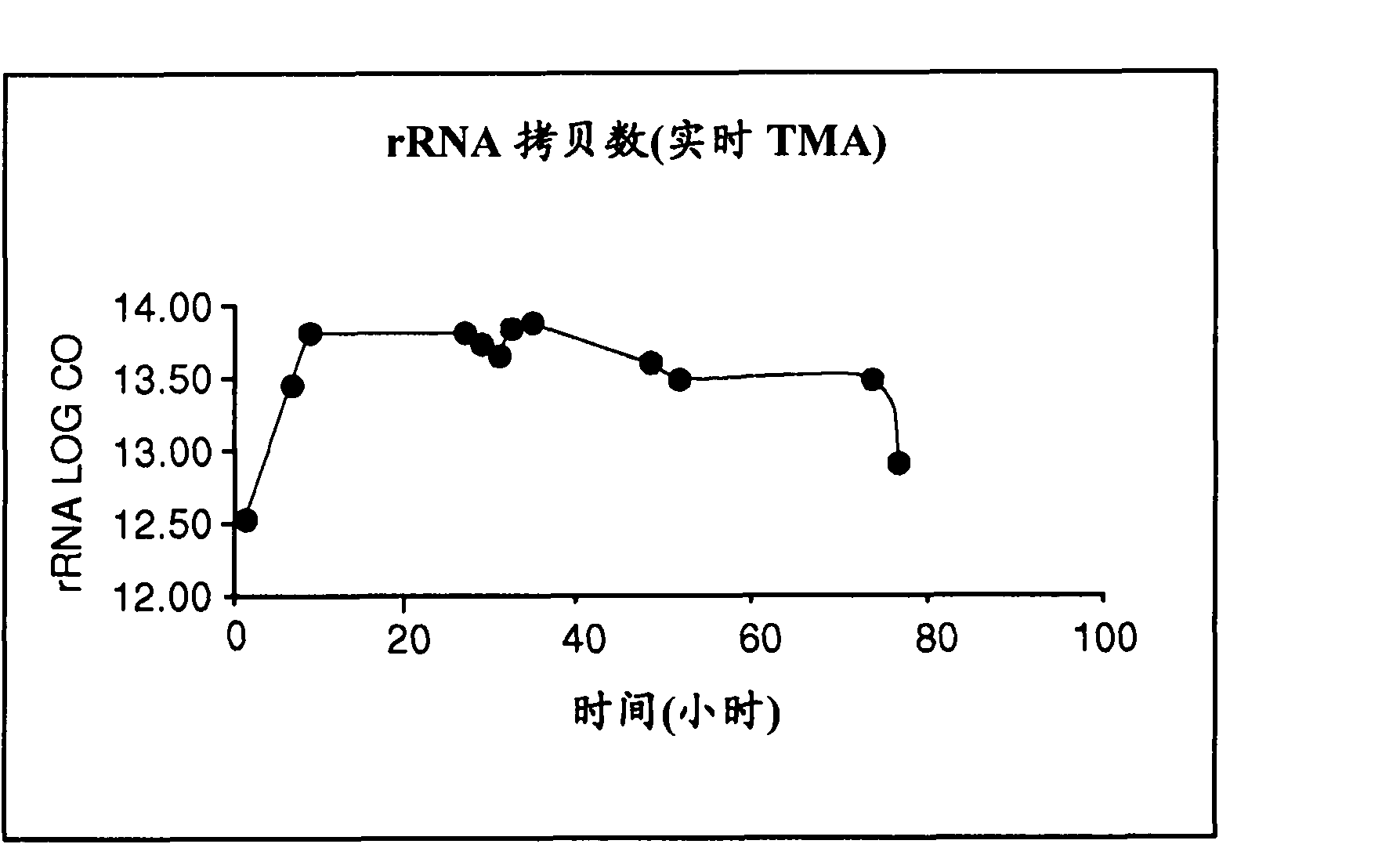Method for evaluating the virulence of pathogenic biphasic bacteria
A technology of bacterial toxicity and bacteria, which is applied in the field of virulence of pathogenic bacteria in two phases, can solve the problems of long incubation time and difficulty in accurately detecting pathogenic bacteria
- Summary
- Abstract
- Description
- Claims
- Application Information
AI Technical Summary
Problems solved by technology
Method used
Image
Examples
Embodiment 1
[0039] A reference curve for determining the virulence of Legionella pneumophila was drawn.
[0040] Take out 3-5 colonies of Legionella pneumophila (Legionellapneumophila) from the previously propagated medium plate, grow in liquid medium for 48-72 hours, add to 40 ml of freshly sterilized liquid medium to prepare a sample. The samples were shaken (175 rpm) at 36°C for 24 hours.
[0041] A sample of Legionella pneumophila was added to another freshly sterilized liquid medium at a volume ratio of 1:40 to prepare a reference sample. The samples were shaken (175 rpm) at 36°C for 24 hours.
[0042] The reference samples were assayed at the following different time points to determine the various growth phases and DNA and RNA concentrations of Legionella pneumophila: 1.5 hours (for the lag phase), 6 hours, 9 hours (for the exponential phase), 26 hours Hours, 28 hours, 30 hours, 32 hours, 34 hours, 48 hours, 51.5 hours, 73.5 hours and 77 hours (for the post-exponential period)....
Embodiment 2
[0053] Planktonic Legionella pneumophila cells were obtained from different 50 ml samples of cooling tower water by filtration-based concentration. Samples were filtered through a polyethersulfone (PES) 0.45 μm membrane. Cells were lysed on the membrane overnight with 3 ml chemical lysis buffer STM and the lysate was filtered through a PES 0.22 μm membrane to remove cell debris.
[0054] The DNA and rRNA in the lysate were quantitatively determined according to the method described in Example 1.
[0055] As shown in Table 1, most of these field samples had rRNA / DNA ratios in the range of 300-9000, indicating that the growth phase of Legionella pneumophila is post-exponential.
[0056] Table 1
[0057] sample
[0058] Samples 5, 9 and 14 had high RNA concentrations, indicating that they were in a less virulent exponential growth phase, which may be the result of the host shedding the bacteria for the first time.
PUM
 Login to View More
Login to View More Abstract
Description
Claims
Application Information
 Login to View More
Login to View More - R&D
- Intellectual Property
- Life Sciences
- Materials
- Tech Scout
- Unparalleled Data Quality
- Higher Quality Content
- 60% Fewer Hallucinations
Browse by: Latest US Patents, China's latest patents, Technical Efficacy Thesaurus, Application Domain, Technology Topic, Popular Technical Reports.
© 2025 PatSnap. All rights reserved.Legal|Privacy policy|Modern Slavery Act Transparency Statement|Sitemap|About US| Contact US: help@patsnap.com



